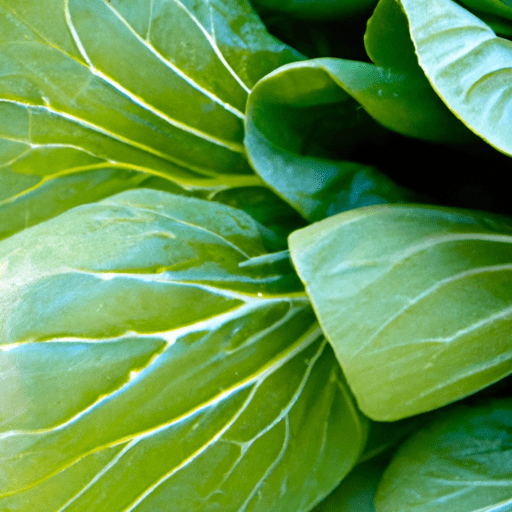Exploring the Delicate Delights of Pak Choi Leaves
Pak Choi, also known as bok choy or Chinese cabbage, is a leafy green vegetable that has long been a staple in Asian cuisine. With its mild yet distinct taste and delicate texture, pak choi leaves offer a unique flavor profile that can elevate a variety of dishes. Whether you are a seasoned cook or a culinary enthusiast looking to explore new ingredients, pak choi leaves are a wonderful addition to your kitchen.
The Taste and Texture of Pak Choi Leaves
Pak choi leaves feature a subtle yet pleasant taste that can be described as slightly sweet and mildly bitter. The flavor is delicate and not overpowering, making it a versatile vegetable that can be easily incorporated into various dishes. When cooked, the leaves tenderize and develop a delightful melt-in-your-mouth texture, while still retaining a slight crunch.
Common Uses in Cooking
Pak choi leaves are incredibly versatile and can be used in a multitude of dishes, from stir-fries to soups and even salads. Here are a few popular ways to make the most of this leafy green:
Stir-Fries: Sauté pak choi leaves with garlic and ginger for a quick and nourishing stir-fry. Its tender leaves and mild taste pair well with other vegetables, seafood, or tofu.
Soups and Broths: Add pak choi leaves to your favorite soups or broths for an added layer of freshness. The leaves cook quickly, making them a perfect addition to a comforting bowl of hot soup.
Salads: Toss thinly sliced raw pak choi leaves into salads to bring a delightful crunch and a hint of bitterness. The leaves’ vibrant green color adds visual appeal to any dish.
Nutritional Value and Health Benefits
Pak choi leaves are packed with essential nutrients, making them a valuable addition to a healthy diet. Some notable nutritional benefits include:
- Vitamin C: Pak choi leaves are rich in vitamin C, which supports a healthy immune system and promotes collagen formation.
- Vitamin K: These leaves are an excellent source of vitamin K, vital for bone health and blood clotting.
- Fiber: Pak choi leaves are fiber-rich, aiding digestion and supporting a healthy gut.
- Antioxidants: The leaves contain antioxidants that help protect against oxidative stress and support overall well-being.
Including pak choi leaves in your meals is a tasty and nutritious way to enhance your diet and reap these health benefits.
A Brief Historical Perspective
Pak choi has a long history in Chinese cuisine, where it is believed to have originated. In ancient China, pak choi was highly regarded for its medicinal properties and its ability to nourish both the body and the spirit. Over time, it gained popularity beyond China’s borders and is now enjoyed worldwide.
Fun Facts about Pak Choi Leaves
Here are some interesting tidbits about pak choi leaves:
- Pak choi belongs to the cruciferous vegetable family, along with broccoli, cabbage, and kale.
- The name “bok choy” is derived from the Cantonese term for “white vegetable,” referring to the pale stalks of some varieties.
- There are different types of pak choi, including baby pak choi, which has smaller, milder leaves and a more delicate flavor.
Conclusion
Pak choi leaves are a delightful addition to any culinary repertoire. Whether you are looking to add depth to a stir-fry or bring freshness to a salad, these versatile leaves are sure to impress. With their delicate taste, unique texture, and numerous health benefits, pak choi leaves are worth exploring and incorporating into your cooking adventures.
Pak Choi Leaves
- Origin: Pak choi, also known as bok choy or Chinese cabbage, originated in China over 6,000 years ago. It is a member of the Brassica family, which also includes cabbage, broccoli, and kale.
- Common Uses: Pak choi leaves are commonly used in Asian cuisine, especially in stir-fries, soups, and salads. The tender leaves can be eaten raw or cooked.
- Nutritional Benefits: Pak choi leaves are low in calories and rich in vitamins and minerals. They are an excellent source of vitamin C, vitamin A, vitamin K, and folate. They also contain significant amounts of calcium, iron, and potassium.
- Unique Properties: One unique property of pak choi leaves is their high water content, which gives them a crisp texture when eaten raw or a soft and tender texture when cooked. They have a mild, slightly sweet flavor that pairs well with a variety of ingredients and sauces.
- Historical Significance: Pak choi has been cultivated and consumed in China for hundreds of years. It is often associated with traditional Chinese dishes and is an integral part of Chinese culinary culture. Over time, it has also gained popularity in other parts of Asia and around the world due to its versatile flavor and nutritional benefits.




Use the share button below if you liked it.
It makes me smile, when I see it.